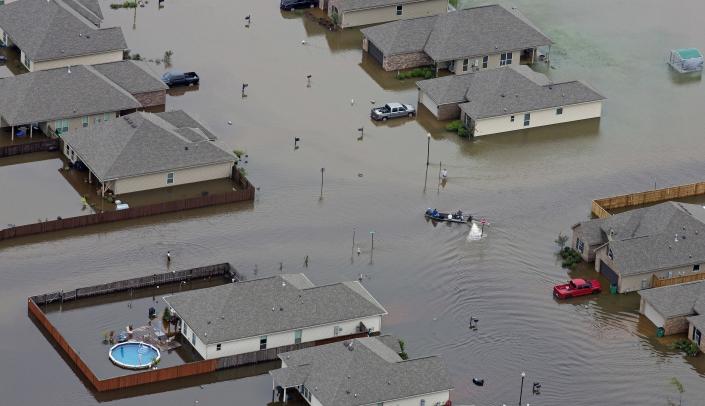El Ninos are far costlier than once thought, in the trillions, study says -- and one's brewing now

Views (127)

The natural burst of El Nino warming that changes weather worldwide is far costlier with longer-lasting expenses than experts had thought, averaging trillions of dollars in damage, a new study found. An El Nino is brewing now and it might be a big — and therefore costly — one, scientists said. El Nino is a temporary and natural warming of parts of the equatorial Pacific, that causes droughts, floods and heat waves in different parts of the world.
WASHINGTON (AP) — The natural burst of El Nino warming that changes weather worldwide is far costlier with longer-lasting expenses than experts had thought, averaging trillions of dollars in damage, a new study found.
But the Dartmouth team said they are looking at more than the traditional costs and for longer time periods.
“We have this sense that El Nino is a really big hammer that hits the Earth system every few years. But we didn’t have as much of a handle on its sort of macroeconomic implications, both what that means just on a year-to-year basis and what that might mean with future global warming,” said study lead author Christopher Callahan, a climate impacts researcher at Dartmouth.
“Economies bear the scars of El Nino for a decade or more and potentially forever,” said study co-author Justin Mankin, a Dartmouth climate scientist.
The economic scars are the diversion of spending away from technology and innovation toward recovery and rebuilding efforts, Callahan said. It's about opportunities lost while digging out of the El Nino hole.
The way Callahan and Mankin did this was to simulate a world without an El Nino event and look at the global difference in costs, compared to the global gross domestic product, Mankin said.
El Nino's biggest impacts generally hit in the northern winter, but in the summer it reduces hurricane activity in the Atlantic, studies show. It makes it wetter across much of the U.S. South and West, Peru, Uruguay and Argentina, some of Southeast Asia, and a bit of east central Africa. It makes it drier in southeast Africa, southern Asia, northern Australia and the Amazon and often leads to increased wildfires in those areas. It's warmer in much of Asia, the American Pacific Northwest and Australia.
El Ninos occur on average about every three to five years and vary in strength, according to the U.S. National Oceanic and Atmospheric Administration. The last strong El Nino was in 2016.
“Our economies are poorly adjusted and poorly adapted to the climate variability that we have right now," Mankin said.
Neither Mankin nor Callahan are full-time economists. Economists who looked at their study were not impressed, but other climate scientists were.
Mankin and Callahan said their study looked at the globe as a whole, not individual countries.
In those places hurt, El Nino economic damage evaporated quickly contrary to what the Dartmouth team said, Mohaddes said. He also found the Dartmouth estimates of damage too big, with their estimates coming close to the economic cost of the Great Recession of 2007 and 2008.
Climate economist Gary Yohe at Wesleyan University in Connecticut said “the enormous estimates cannot be explained simply by forward-looking accounting,” calling them not credible.
However, Marshall Burke, an economist and environmental policy professor at Stanford University, said the Dartmouth scientists "make a compelling case that this has really slowed growth in severely affected countries like Peru, and resulted in trillions of (dollars) of lost economic output around the world.”
“This paper has certainly made me much more worried about the upcoming and likely large El Nino,” Burke said in an email.
Michael McPhaden, a NOAA oceanographer who studies El Ninos, said he has long thought damage estimates of El Nino were way too low, and more important the “big loser during El Nino is the global south,” which are poorer nations that are hit the hardest.
“The economic impacts of the El Nino that is predicted for later this year will depend on how strong it is,” McPhaden said in an email. Big “monster El Ninos” like those in 1997-98 “can be hugely damaging with lingering effects that carry over into following years. On the other hand, if it turns out to be a garden variety El Nino, the consequences may be more muted and the recovery time shortened.”
___
___
___
0 Likes
